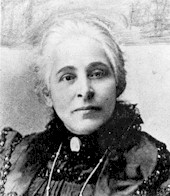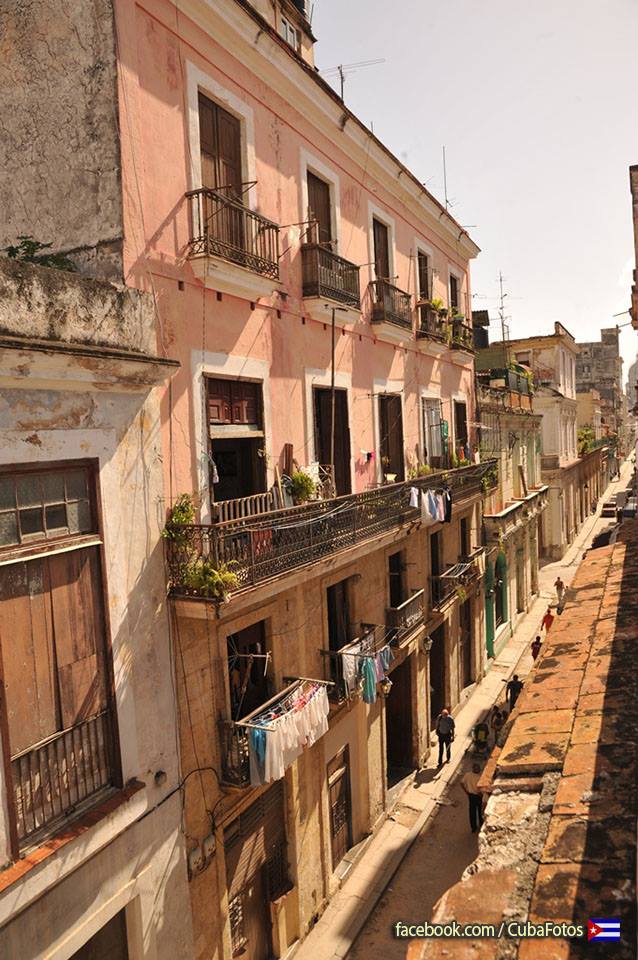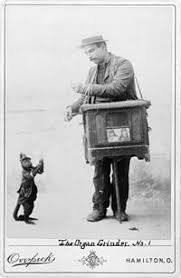 BOSQUEJO EN LA VIDA DEL GENERALÍSIMO MÁXIMO GÓMEZ. SUS AMORES Y SACRIFICIOS.
BOSQUEJO EN LA VIDA DEL GENERALÍSIMO MÁXIMO GÓMEZ. SUS AMORES Y SACRIFICIOS.
Quizá usted, al igual que yo, se sorprenda al saber que Máximo Gómez Báez, General en Jefe del Ejército Libertador, fue un gran bailador y, al menos en su juventud, tuvo una peculiar suerte con las mujeres.
Su compatriota Federico Henríquez y Carvajal, que lo conoció cuando el ya capitán de las milicias dominicanas tenía 26 años de edad, lo recordaba, décadas después, como un hombre bien parecido. Decía don Federico: «Tenía trigueña la faz, finos los labios, los ojos negros, sedoso el cabello y era el galán mimado de las damas; en breve daba la norma en bailes, veladas, paseos, amores y amoríos.
«Era un bailador sin émulos. En vals, danza, polka o mazurca era el primero. Él dirigía siempre las contradanzas. E iba él, amante de la música y trovador nocturno, alta la noche, en el grupo promotor de serenatas que —a la luz de la luna— salían a desgranar, a dúo, canciones de amor y nostálgicas barcarolas».

Pronto ganaron fama su virilidad y audacia amorosa. Con aires de galán, afirman sus biógrafos, mantenía el espigado oficial una activa vida social. Procreó cuatro hijos con igual número de mujeres y no contrajo matrimonio con ninguna. Tres de esas cuatro mujeres lo superaban en edad.
SU VIDA EN CUBA.
Desembarca en tierra cubana el 13 de julio de 1865, y con su madre y dos hermanas se establecen en Santiago de Cuba. En su país, Santo Domingo, donde combatiendo al lado de España, sin la brillantez que caracterizará luego su trayectoria militar, alcanzó el grado de comandante. Aquí se siente confuso y decepcionado.
Corre ya el año de 1884 y los cubanos del exilio, decididos a reanudar la lucha, lo invitan a sumarse al proyecto. Formula un plan que contempla el fomento de múltiples focos insurreccionales, una junta de Gobierno y un mando militar y lo remite a Nueva York. Cae enfermo mientras espera respuesta. La pulmonía aqueja asimismo a la esposa y a dos de los niños. Enterado de la situación el general Eusebio Hernández, médico, recorre sin detenerse en el camino entre Tegucigalpa y San Pedro Sula. A su llegada tienen que desmontarlo del caballo. Llegó tarde para salvar a Margarita, de poco más de un año de edad.

Ya en Jiguaní, José Antonio Toro Pelegrín, un joven revolucionario del poblado, le ofrece su casa para que pase la noche. La familia recibe con hospitalidad al gallardo militar que provoca la curiosidad de las hermanas de José Antonio, en especial de Bernarda, apodada Manana, que ha pasado los días anteriores cosiendo chamarretas y bordando escarapelas para la tropa insurrecta.
Gómez la mira de soslayo, con disimulo, pero ella se percata del interés que despierta en el recién llegado, y lo disfruta.
El hombre experimentado en lides amorosas queda prendado de la belleza serena de Manana. Lo impactan sus negros cabellos, su simpatía, sus modales refinados, su hablar pausado.
En Jiguani, Gómez se prenda de Bernarda y parece que lo mismo, con respecto a él, sucedió con la muchacha. Hay antes otra Bernarda —Bernarda Figueredo— de Bayamo, que le despierta una intensa pasión. Dice Gómez: «Su vista me causó tal impresión que vacilé dos días para continuar mi marcha; por fin, obedeciendo a la voz del deber pude arrancarme de aquel lugar donde dejaba a aquella mujer que por primera vez había despertado en mí una pasión tan ardiente, que yo sentía devorarme».

Bernarda Toro le trae el recuerdo de la otra Bernarda. Diría que el nombre hizo eco en su corazón. Secreto que a ella no le sería revelado jamás. La elegía como compañera por la coincidencia de nombre y algún parecido de carácter con la primera que le inspiró tanto. Desde el encuentro en Jiguaní Gómez quedará unido a Bernarda Toro, pese a sus amores efímeros con la joven Panchita Venero y con Lola Romero, una viuda propietaria de un hotel en que se aloja por casualidad y donde el amable trato de la señora propicia un acercamiento que progresa. La relación con la Venero fue efímera, pero dejó una huella profunda en los recuerdos del guerrero por la forma en que la muchacha fue asesinada por los españoles, sometida a un cruento y humillante martirio. La de Lola fue una relación secreta, sin anotaciones como es lógico suponer en su diario. Llenó todo un vacío en meses de tremenda soledad en Honduras y dejó un hijo.
Asume el general Máximo Gómez la jefatura de la División de Holguín. Son tiempos difíciles. El Conde de Valmaseda lleva a cabo una política de tierra arrasada. Incendia cuanto encuentra a su paso, destruye fincas de propietarios cubanos y pasa por las armas a todo cubano mayor de quince años que sorprenda fuera de sus predios. Es la llamada Corriente de Valmaseda. Las tropas cubanas están hambrientas, cubiertas de harapos y mal armadas y diezmadas por el cólera. Gómez ocupa Santa Rita y combate en localidades cercanas, inmediatas a la ranchería donde está Manana. Tan pronto el rudo batallar le da un respiro visita la prefectura de Charco Redondo, bien resguardada entre montañas.

El 4 de junio de 1870 hay un aire festivo en el campamento. La pareja va a contraer matrimonio al estilo mambí, esto es, ante el prefecto de la localidad donde radica la novia. Salvador Cisneros Betancourt, marqués de Santa Lucía, presidente de la Cámara de Representantes de la República en Armas, y Fernando Figueredo Socarrás, patriota de reconocida austeridad y valentía, son los testigos de la ceremonia que tiene lugar conforme a lo dispuesto en la legislación civil de la República.
La radiante esposa es presentada a la tropa por el General, feliz y comprometido con la causa de Cuba. Ella seguirá al marido en la manigua y compartirá con él tristezas y alegrías y verá nacer y crecer a los hijos bajo el humo de las batallas.
SUS HIJOS.
El Generalísimo Máximo Gómez Báez tuvo un total de 16 hijos reconocidos por la historia, de ellos 12 con su esposa Bernarda “Manana” del Toro. Esta es una lista de ellos.

Hijos con “Manana”.
Margarita Gómez Toro. Nació y murió en los campos de Cuba Libre.
Andrés Gómez Toro. Nació y murió en los campos de Cuba Libre.
Clemencia Gómez Toro. Nació en los campos de Cuba Libre, la tercera, el 1ro. de mayo de 1873.
Francisco Gómez Toro, Panchito. (1876-1896). Capitán. Cuarto hijo de Máximo Gómez Báez con Bernarda Toro Pelegrín.
Nació en La Reforma, Sancti Spíritus, Las Villas, en plena guerra, el 11 de marzo de 1876.
Máximo Gómez Toro, Maxito. Nació el 8 de diciembre de 1877 en los campos de Cuba Libre.
Urbano. Nace el 1ro. de septiembre de 1880 en Kingston, Jamaica.
Andrés. Muere el 16 de febrero de 1882 en Honduras, al parecer de las lombrices, en Honduras.
Margarita. Fallece el 15 de mayo de 1884, en Honduras.
Bernardo. Nace en noviembre de 1884 en New Orleáns.
Andrés. Ve la luz por primera vez en Jamaica, el 20 de marzo de 1887.
Margarita. Nace en Montecristi, en agosto de 1889.
Fuera de Matrimonio.
Ignacita. Es la primogénita de Máximo Gómez. Nació en Santo Domingo y allí quedó de ocho meses, al cuidado de la madre, en 1865, cuando él marchó a Cuba con las Reservas dominicanas del Ejército Español. La madre murió y la crió la tía Josefa Castillo. Gómez la volvió a ver en 1886 cuando ella tenía 21 años.
Laito. Abril 19 de 1881: “Llegó Laito a mi lado. Hijo de mis primeros amores, lo dejé en la cuna allá en mi patria cuando la abandoné. Nada he podido hacer por él”.
Antonio Romero. Nacido en la década de 1880, fuera de matrimonio.
María Teresa Travel. Nacida en la década de 1880, fuera de matrimonio.
MAXIMO GÓMEZ, SUS ÚLTIMOS AÑOS.

Al final de la Guerra de la Independencia de Cuba en 1898, se retiró a una villa en las afueras de La Habana. Rechazó la nominación presidencial que le fue ofrecida en 1901, y se esperaba que ganara sin oposición, principalmente porque siempre le disgustaba la política. Además, después de 40 años de vivir en Cuba, todavía sentía que al ser nacido en la República Dominicana, no debía convertirse en el líder civil de Cuba.
Murió en su villa el 15 de junio de 1905, tenía 68 años y fue enterrado en el cementerio de Colón, La Habana.

 BRIEFS ON GENERAL MÁXIMO GÓMEZ. HIS LOVE LIFE AND SACRIFICES.
BRIEFS ON GENERAL MÁXIMO GÓMEZ. HIS LOVE LIFE AND SACRIFICES.
Perhaps you, like me, are surprised to learn that Máximo Gómez Báez, General in Chief of the Liberation Army, was a great dancer and, at least in his youth, had a peculiar luck with women.
His compatriot Federico Henriquez y Carvajal, who knew him when he was captain of the Dominican militias was 26 years old, remembered him, decades later, as a good-looking man. Don Federico said: “His face was dark, his lips were thin, his eyes were black, his hair was silky, and he was the darling of the ladies; soon gave the norm in dances, evenings, walks, loves and affairs.
«He was a dancer without emulators. In waltz, dance, polka or mazurka was the first. He always directed the contradanzas. And he went, lover of music and nocturnal troubadour, high night, in the group promoter of serenades that – in the light of the moon – they went out to shed, to duo, love songs and nostalgic barcarolas ».
Soon his virility and amorous audacity gained fame. With the air of a gallant, his biographers say, the ebullient officer maintained an active social life. He produced four children with an equal number of women and did not marry any. Three of those four women outnumbered him.

HIS LIFE IN CUBA.
He landed on Cuban soil on July 13, 1865, and with his mother and two sisters settled in Santiago de Cuba. In his country, Santo Domingo, where fighting alongside Spain, without the brilliance that will characterize then his military career, reached the rank of commander. Here he feels confused and disappointed.
It is already the year of 1884 and the Cubans of exile, determined to resume the fight, invite him to join the project. It formulates a plan that includes the promotion of multiple insurrectionary foci, a government junta and a military command and sends it to New York. He falls ill while waiting for an answer. Pneumonia also afflicts the wife and two of the children. Aware of the situation, General Eusebio Hernández, a doctor, travels without stopping on the road between Tegucigalpa and San Pedro Sula. Upon arrival they have to dismount it from the horse. He arrived late to save Margarita, just over a year old.
Once in Jiguaní, José Antonio Toro Pelegrín, a young revolutionary from the town, offers him his house to spend the night. The family receives with hospitality the gallant soldier who provokes the curiosity of the sisters of José Antonio, especially Bernarda, nicknamed Manana, who has spent the previous days sewing chamarretas and embroidering rosettes for the insurgent troop.
Gómez looks at her sidelong, with dissimulation, but she notices the interest she awakens in the newcomer, and enjoys it.
The man experienced in love affairs is captivated by the serene beauty of Manana. He is struck by his black hair, his sympathy, his refined manners, his slow speech.

In Jiguani, Gomez takes pity on Bernarda and it seems that the same thing, with regard to him, happened with the girl. There is another Bernarda -Bernarda Figueredo- from Bayamo who awakens an intense passion. Says Gomez: “His sight made such an impression on me that I hesitated two days to continue my march; finally, obeying the voice of duty, I could pluck myself from that place where I left that woman who for the first time had awakened in me such a passionate passion that I felt devouring myself ».
Bernarda Toro brings her the memory of the other Bernarda. I would say that the name echoed in his heart. Secret that would never be revealed to her. He chose her as a companion by the coincidence of name and some similarity of character with the first one that inspired him so much. From the meeting in Jiguaní Gómez will be united to Bernarda Toro, in spite of his ephemeral loves with the young Panchita Venero and with Lola Romero, a widow who owns a hotel where she lodges by chance and where the kind treatment of the lady fosters an approach that progresses The relationship with the Venero was ephemeral, but it left a deep imprint on the warrior’s memories of the way in which the girl was murdered by the Spaniards, subjected to a cruel and humiliating martyrdom. The one of Lola was a secret relation, without annotations as it is logical to suppose in its newspaper. It filled a void in months of tremendous loneliness in Honduras and left a child.
General Máximo Gómez assumes the leadership of the Holguin Division. These are hard times. The Count of Valmaseda carries out a policy of scorched earth. He burns everything he finds in his path, destroys the farms of Cuban owners and passes through arms to every Cuban over fifteen years old who surprises outside his premises. It is the so-called Valmaseda Current. The Cuban troops are hungry, covered in rags and badly armed and decimated by cholera. Gomez occupies Santa Rita and fights in nearby towns, near the ranch where Manana is. As soon as the rough struggle gives you a break, visit the prefecture of Charco Redondo, well sheltered between mountains.

On June 4, 1870 there is a festive air in the camp. The couple will marry in a mambí style, that is, before the prefect of the town where the bride is. Salvador Cisneros Betancourt, Marqués de Santa Lucía, president of the House of Representatives of the Republic in Arms, and Fernando Figueredo Socarrás, patriot of recognized austerity and courage, are the witnesses of the ceremony that takes place in accordance with the provisions of the civil legislation of the Republic.
The radiant wife is presented to the troop by the General, happy and committed to the cause of Cuba. She will follow the husband in the jungle and will share with him sorrows and joys and will see the children born and grow up under the smoke of battles.
MÁXIMO GÓMEZ, HIS LAST YEARS.

At the end of the War of the Independence of Cuba in 1898, he retired to a village on the outskirts of Havana. He rejected the presidential nomination that was offered him in 1901, and he was expected to win unopposed, mainly because he always disliked politics. In addition, after 40 years of living in Cuba, he still felt that being born in the Dominican Republic, he should not become Cuba’s civilian leader.
He died in his villa on June 15, 1905, was 68 years old and was buried in the cemetery of Colón, Havana.
Agencies/ Wiki/ Ciro Bianchi/ Excerpts/ Extractos/ Internet Photos/ Arnoldo Varona/ www.TheCubanHistory.com
THE CUBAN HISTORY, HOLLYWOOD.

 CUBAN MUSIC: ADALBERTO ALVAREZ AND HIS SON (SALSA 2018) “FROM CUBA TO THE WHOLE WORLD.”
CUBAN MUSIC: ADALBERTO ALVAREZ AND HIS SON (SALSA 2018) “FROM CUBA TO THE WHOLE WORLD.”





















